#medieval serbia
Explore tagged Tumblr posts
Text
THE SORROWS OF MILICA NEMANJIC OF SERBIA

Though often remembered for her diplomacy and regency (1389-1393), one thing some sources and historians fail to mention about Princess Milica is her struggles with motherhood and widowhood, even through her politics.
Early Life
Milica was born sometime in 1335 as the daughter of Duke Vratko, known in Kosovo legends as Jug Bogdan, a descendant of the Nemanjić dynasty; however, the identity of her mother is unknown.
In her early years, Milica would often stay at the court of her cousins, Tsar Dušan and Tsaritsa Jelena. The couple took a liking to her, sponsored her stay at court, and provided her education, thus she permanently settled at court.
It is at the same court where she had the opportunity to meet Lazar Hrebeljanović, six years her senior and, at the time, a young man of lower nobility working as a puter/stavilac.
According to a legend, Milica met Lazar at the same place where she would later build the Ljubostinja Monastery.
There could be some truth to this tale, but it is worth noting that they were likely introduced at court by the same couple who planned for them to marry.
Marriage to Lazar
Sometime in 1353, Milica and Lazar were married by the wish of Dušan and Jelena and with the blessing of her father. The mere fact that the imperial couple arranged their betrothal suggests that Lazar was a well-respected man enough to join the Nemanjić dynasty by kinship.
Though the marriage was for political purposes, as it elevated Lazar’s status and reputation, it is understood through Milica’s poem that they had grown to hold deep affection and value for each other.
Through her poem “To My Widow, O Bridegroom,” it can be understood that Milica viewed Lazar as someone she desired, admired, and found comfort and protection in.
It is worth mentioning that Milica was one of the many reasons Lazar (r. 1365-1389) was able to elevate himself to the title of Prince (Knez) and expand his realm. While his rivals claimed the rest of Serbia due to their Nemanjić ancestry, Lazar, who was not one of their own, likely had to rely on his wife and children’s claim to the “holy” dynasty to gain the trust of the Serbian people.
Throughout their 36-year-long marriage, the couple welcomed eight children, five daughters and three sons, though only seven made it to adulthood.
Mara Lazarević (b. 1355 - d. 1426)
Dragana Lazarević (b. sometime after 1355 and before 1364, d. sometime after 1396)
Jelena Lazarević (b. 1364/1365 - d. 1443)
Teodora Lazarević (b. after 1365 and before 1371, d. after 1396 and before 1405)
Olivera Lazarević (b. 1372/1373 - d. after 1444)
Stefan Lazarević (b. 1377 - d. 1427)
Vuk Lazarević (b. 1380 - d. 1410)
Dobrovoj Lazarević (died in infancy)
It seems that the couple enjoyed a harmonious and faithful marriage, as there are no mentions of a mistress or illegitimate children that Lazar could have fathered.
Her Widowhood and Regency
Following the defeat at the Battle of Kosovo in the summer of 1389, Lazar was ordered to be beheaded, leaving behind a venerable realm and his wife at the forefront.
Since his son and heir was too young to be entrusted with the duty of ruling, the Principality of Serbia fell into the hands of the Dowager Princess, Milica.
Though it is possible that Milica might have been educated in diplomacy, she certainly did not have any first-hand experience up until that point. Her primary duties as the wife of a prominent ruler were to expand the dynasty by child-bearing, oversee her children’s education, manage the royal court’s income and expenses, and participate in charities such as hospitals and monasteries—duties in which Milica, as a dutiful mother and consort, excelled.
Constantine the Philosopher described her in the following words: “…pious lady, worthy of glory and wise mother, who surpassed many chosen mothers."
At first, Milica, a fearful mother and mourning widow, wasn’t much interested in staying in Serbia and planned to take temporary refuge with Olivera, Stefan, and Vuk, her youngest children, in Dubvronik, this is evident by a document in which the Senate offered her and her children hospitality.
Unfortunately, her plans had to be annulled as the Hungarians advanced their conquest in the north of Serbia and the Ottomans to the south of it. Thus, her final decision was to stay, and sometime between November and December of that same year, she accepted vassalage to the Ottomans despite the reluctance of many Serbian lords, including her son-in-law, Vuk Branković (through Mara), a decision that would cost the Branković family their lands.
The vassalage included loyalty, taxes in the form of soldiers, and lastly, her youngest daughter, Olivera, to be the wife of the Sultan. All requirements were met, as by the spring of 1390, her daughter was married to the Sultan.
Milica continued to rule over Serbia for three more years, until her eldest son Stefan reached adulthood in 1393. That year, she became a nun under the name "Eugenia," yet she continued to advise her son behind the scenes, as evidenced by her diplomatic mission with her cousin and lady-courtier, Jefimija, to Sultan Bayezid in the spring of 1398 when he suspected Stefan of treason.
The issue was soon resolved, and Stefan was forgiven.
Her Motherly Sorrows Though things seemed to be going quietly from 1398 onward, the peace came to an end in 1402, following the Battle of Ankara.
While her beloved son, Stefan, was able to elevate himself to the title of Despot in Constantinople, her son Vuk, wishing for more territory to rule over, revolted against his brother. Additionally, her daughter Olivera and her granddaughters fell into Timurid captivity.
Milica’s daughter Mara, along with her respective children, developed a vendetta against the Lazarević family, whom they blamed for Vuk Branković’s death.
All these stresses likely prompted her to write her poem “To My Widow, O Bridegroom,” dedicated to her husband, Lazar, in 1402. Amid all the motherly worries and family vendettas, it seems that the memory of her deceased husband was what she found comfort in.
Later Life
When the Ottoman civil war broke out between Bayezid’s sons, Vuk and Stefan found themselves on opposite sides of the conflict, supporting different Ottoman rulers.
Milica was able to reconcile her sons; however, after her death, their bloody feud reappeared.
Milica passed away on November 11, 1405, at the age of seventy and was laid to rest in the Ljubostinja Monastery.
Perhaps in her final days, she was at ease since her daughter Olivera was released, and her sons “ended” their vendetta. However, it seems, based on what happened soon after her death, that they only did so for the sake of their mother.
Legacy
Milica has left her mark on Serbian history, being declared a saint in the Eastern Orthodox Church. Today, many statues, church venerations, and streets are named after her.
Poem of Milica to Her Husband

Who is this? Speak into my ears. Is this the one I desired before, my adornment, the gathering for my scattered children? Is this the one whom out of envy the enemies sought to destroy and keep the light of my sight in dark dungeons, and they could not? Is this the one to my widow, O Bridegroom? Come, O Bridegroom, come, and repay those who do me wrong according to their deeds, for they did not understand your coming to my aid. Take up the weapon and rise, and do not delay! Strike with sharpened arrows into their hearts, those who have sharpened them against me, the lawless. I do not tolerate the mockery of those against me. With how many vile sacrifices have they defiled me! Come, avenge me with your blood. Come, be my support in my downfall. Gather my scattered children, whom envy the devil has torn from me. Gather them into my fold, tend to my children, that the wolf may not eat from my flock, that envy may not scatter them, as before, when I was not with them. Do not let them sleep around you. Do not let your legs weaken. Tend to my flock, which I entrusted to you. Drive away from them the lawless barbarians. Do not cease to fight with them for me and my flock. Rejoice, my eye that never sleeps, O Lazar. And again I ascend to the first. Lazar, who surpasses all stars with his shining, Lazar, appropriator to foreigners, preacher of the Trinity, liberator of the captured. Lazar, the unwavering pillar of the church, healer to the sick, clothing to the naked, Lazar, strong duke to the innocents and savior. Rejoice, O Lazar apostolic, I sing to you, and again I say: rejoice. Rejoice, lily that has sprouted from thorns, unconquerable weapon for soldiers. Rejoice, teacher to the hermits. Rejoice, Lazar, to those who sail, steersman and calm harbor. Rejoice, avenger of the oppressed and denouncer of the deceitful. Rejoice, comforter of those who weep, and defender of the poor, and clothing to the naked. Rejoice, strength of beauty, and sustainer of widows. Blessed indeed are you, O Lazar, bless me who blesses you. There is no praise that you are not worthy of, but the mind grows weary...
(Sources: Dve srpske sultanije : Olivera Lazarevic (1373-1444) : Mara Brankovic (1418-1487) by Giljen, Nikola)
#milica of serbia#milica hrebeljanović#milicanemanjic#Medieval Serbia#medieval history#medieval poem#history#nun#THE SORROWS OF MILICA NEMANJIC OF SERBIA
43 notes
·
View notes
Text
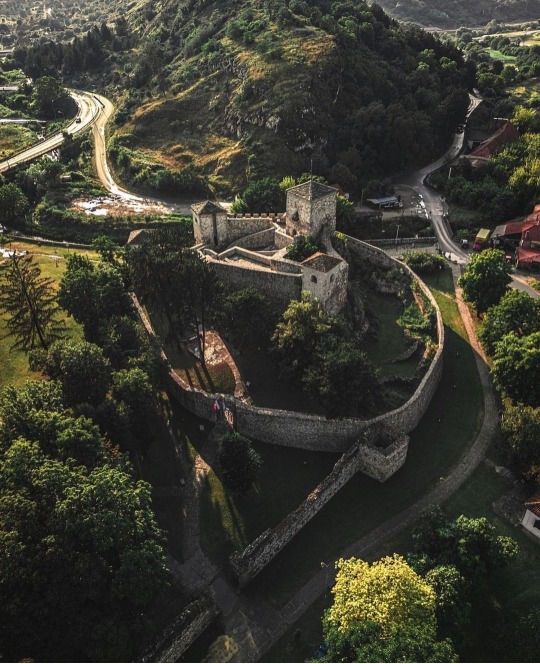
◾Pirot Fortress or Momchilov grad, Southeastern Serbia 🇷🇸
#Pirot#Fortress#Serbian#Medieval Serbia#europe#serbian#balkan#Serbian architecture#Middle ages#Medieval#Serbian history
24 notes
·
View notes
Text








The Siege at Novo Brdo: Pages 8-14, and Glossary
Ink on Bristol
Here lies the second half of my thesis piece. See the rest in my previous post.
#medieval#illustration#comic art#medieval europe#15th century#arms and armor#medieval serbia#ottoman empire#traditional illustration#inking#serbian empire#serbian despotate#historical fashion#historical fiction#mercenary#knights#man at arms
2 notes
·
View notes
Text
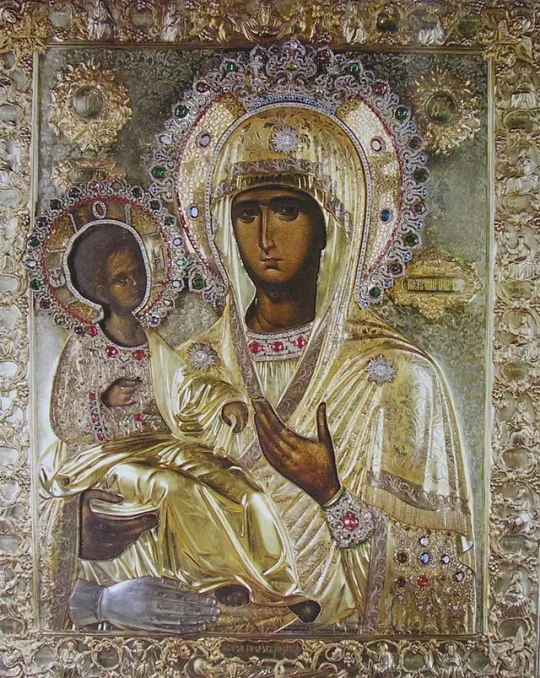

Two most important Marian icons in Serbian history. Theotokos of the Three Hands (left) and Our Lady of Unbreakable Rock (right).
Theotokos of the Three Hands was gifted to St Sava of Serbia by monks of Mar Sabbas monastery because St Sava the Sanctified prophesized that a monk that bears his name will visit monastery in future. He was also gifted his crosier.
Our Lady of Unbreakable Rock is original icon from Lazarica church in Kruševac, at the time our country's capital, in front of which Serbian army took communion before heading to battle in Kosovo field from which they knew they won't return.
#Serbia#Balkan#Balkans#Europe#Eastern Europe#History#Medieval#Orthodox#Orthodoxy#Orthodox Christianity#Christianity
324 notes
·
View notes
Text
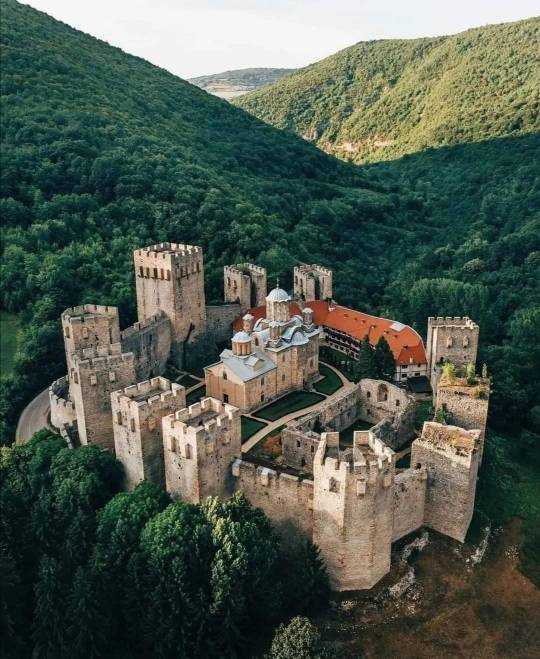
Manasija Monastery - SERBIA
210 notes
·
View notes
Text
Nebojsa Tower, Kalemegdan Fortress, Belgrade Serbia.


#Nebojsa Tower#Medieval#Cannon Tower#Dungeon#Belgrade Fortress#Kalemegdan#Cloudy Sky#Wild Flowers#Kalemegdan Park#Blue Hour#City Lights#Belgrade#Serbia
90 notes
·
View notes
Text

“Marko Kraljević i Šarac / Prince Marko and Sharats” Petar Meseldžija 2021
63 notes
·
View notes
Text

Serbian girl in old medieval Serbian attire
20 notes
·
View notes
Text

Golubac fortress (XIV century) Serbia, Danube Right Bank
5 notes
·
View notes
Text
Sir Milos Obilic Fell For The Princess
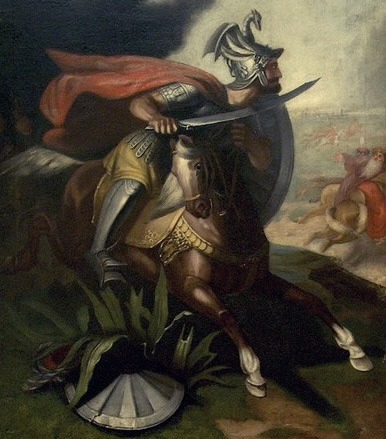
Whether or not Sir Milos Obilic even existed is of no importance as a story started going around Serbia that Milos Obilic, a prodigy and loyal knight of Prince Lazar had fallen for the ethereal Olivera and went as far as asking for her hand in marriage.
It is of no surprise that Sir Milos Obilic; who was a respected knight at the time would often be a visitor at Lazar’s court, it is most likely during his frequent visits that he met and interacted with Princess Olivera. It is also probable that they also interacted during knight tournaments that Olivera and her mother often led.
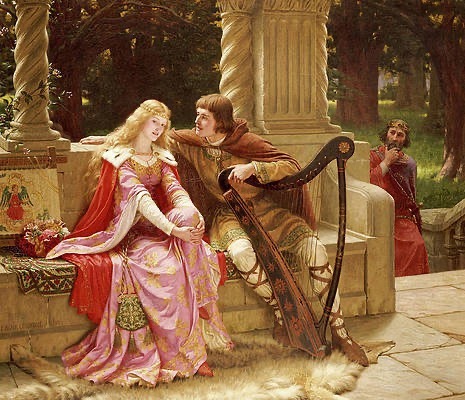
His infatuation with her led to a marriage proposal sent to Lazar from Sir Milos Obilic, but his proposal was rejected by Lazar with the excuse that she was too young and not yet mature to marry.
There is no clear evidence or any narration of Princess Olivera returning the same sentiment he had for her. She may never wish to marry him or had not yet found a desirable candidate in her sample of suitors and that might be why Lazar used the excuse of her age to peacefully reject the marriage proposal.

There are a few reasons why Lazar rejected Milos’s proposal one being that Princesses usually married out of their dynasty by birth to create new alliances and produce children of both dynasties. Lazar married all his other daughters outside of his realm for political games, the same would have happened with Olivera, and since Milos was already a knight of Lazar’s dynasty it wouldn’t be politically beneficial to marry his daughter to him.
Another reason is that though knights are noble and quite rich, they belong to the lower nobility and all of his other daughters married into influential families, sons of rulers or rulers themselves, Lazar was more likely planning on doing the same for Olivera and marrying her into a strong foreign political family.
#Lazar#Knezlazar#LazarevicDynasty#Moravianserbia#knights#princess#Despina Hatun#Olivera Despina#medieval serbia#Sir Milos Obilic Fell For The Princess
11 notes
·
View notes
Text

◾ A Serb dressed in Serbian medieval noble clothing in front of the Serbian orthodox monastery of St. Nicholas, built in Raška style (Serbian medieval architectural style), Stanišići village near Bijeljina, Serb Republic, Bosnia and Herzegovina.
#serbian#medieval serbia#balkan#europe#serbian traditional clothes#serbian folklor#slavic#Serbian man#Serbian male#Raška style#Etno selo stanisici#serbian aesthetics#serbian aesthetic#places to visit
32 notes
·
View notes
Text

style test panel for Novo Brdo comic- eventually panel 1 on p.6
Jadviga lays low an Ottoman foot soldier at the bulwarks
#medieval#ottoman empire#illustration#ink drawing#traditional art#traditional illustration#comics art#comic art#polish armor#medieval serbia#medieval europe#black and white illustration
3 notes
·
View notes
Text




Užice fortress, Serbia.
Photos by: daniel_kraud on IG.
104 notes
·
View notes
Text
History of Serbia.
Description
Tools
Cite thisExport citation fileMain AuthorTemperley, Harold William Vazeille, 1879-1939.Language(s)English PublishedLondon : Bell, 1919. Physical Description359 p.
0 notes
Note
Hi! Love your blogs. I couldn't find anything on 'vampires' in your references. I was wondering if you could cover this illustrious yet monstrous figure? Many thanks!
Writing Notes: Vampires
Vampire - (in popular legend) a creature, often fanged, that preys upon humans, generally by consuming their blood. They have been featured in folklore and fiction of various cultures for hundreds of years, predominantly in Europe, although belief in them has waned in modern times.
Common Depiction:
A bloodsucking creature
Rises from its burial place at night, sometimes in the form of a bat, to drink the blood of humans.
By daybreak, it must return to its grave or to a coffin filled with its native earth.
Tales of vampires are part of the world’s folklore, most notably in Hungary and the Balkan Peninsula.
The disinterment in Serbia in 1725 and 1732 of several fluid-filled corpses that villagers claimed were behind a plague of vampirism led to widespread interest and imaginative treatment of vampirism throughout western Europe.
Vampires are supposedly dead humans (originally suicides, heretics, or criminals) who maintain a kind of life by biting the necks of living humans and sucking their blood; their victims also become vampires after death.
These “undead” creatures cast no shadow and are not reflected in mirrors.
They can be warded off by crucifixes or wreaths of garlic and can be killed by exposure to the sun or by an oak stake driven through the heart.
Origin. Creatures with vampiric characteristics have appeared at least as far back as ancient Greece, where stories were told of creatures that attacked people in their sleep and drained their bodily fluids.
Tales of walking corpses that drank the blood of the living and spread plague flourished in medieval Europe in times of disease.
Cultural historian Christopher Frayling points out how the vampire myth is a parody of the Christian resurrection and a “satanic version” of transubstantiation—the Catholic belief that during Holy Communion the bread and wine change into the body and blood of Jesus Christ.
The vampire myth allows us to examine societal taboos we aren’t always able to discuss. “It’s about wanting a demon lover to take you over; about desiring undesirable things,” Frayling explains. “It transposes them into this myth in a rather pleasurable way.”
Hatred of Garlic. Many cultures have long believed in the extraordinary powers of garlic; from ancient Egypt to Romania, garlic has been used as a natural insect repellent, a natural antibiotic, and as protection against other preternatural evils. Modern belief in garlic’s curative powers against vampires likely comes from these more ancient beliefs.
Literary Examples
The most famous vampire is Count Dracula from Bram Stoker’s novel Dracula (1897).
In the 20th century Anne Rice’s novel Interview with the Vampire, published in 1976, notably introduced the world to vampires that were brooding and self-loathing and squabbled like humans.
Modern vampire treatment in popular culture is usually divided into cycles.
The Malignant Cycle (1922-1948): The vampire is treated as a creature of pure horror, as popular in the early films like Nosferatu and Universal films.
The Erotic Cycle (1950-1985): The vampire is considered evil but alluring, like in the Hammer Horror films.
The Sympathetic Cycle (1987-2001): The vampire is seen as a tragic monster to be pitied, but still feared, though they can sometimes be redeemed, usually by becoming human once more.
The Individualist Cycle (2003-present day): The vampire can be bad, good, or in between, much like humans, and their transformation to vampirism does not imply a change in morality.
In modern vampire literature, the shift from the vampire’s legendary Gothic characteristics to a more romanticized heroism becomes apparent.
The 20th and 21st centuries brought about a new version of the classic vampire.
This creature distances itself from the dark, horrifying being and grows into a more desirable partner (both romantically and socially) than its predecessors.
As was seen in the vampire literature of earlier centuries, the vampire was always the one who attacked because of repressed sexual desires.
Instead, now the human poses the larger threat for the modern vampire to have the ability to control his blood lust because the human now seemingly has control over the vampire’s sexual agency.
The female characters have been refashioned from being threatened to posing more of a (sexual) threat. Examples:
Isabella Swan from The Twilight Series and Gabrielle Maxwell from the Midnight Breed novels actively seek a sexual relationship with their vampire counterparts and are even willing to abandon their identities and constantly risk their lives for a chance to become part of the vampire world.
This contrasting presentation of the vampire’s romantic characteristics could be associated with the time period’s viewpoint of sexuality.
Instead of the repressed sexuality that were apparent in 18th and 19th century works, the modern Byronic vampire is not the main villain who presents danger to those around him.
The vampires are the now the victims who are tasked with repressing their desires, while humans seek to fulfill their desires in becoming a part of the vampire world.
Some Vampire Tropes
Animorphism: Vampires commonly turn into bats (or other nocturnal animals, such as wolves).
Chinese Vampire: An undead being from Chinese Mythology called the jiang shi, depicted as a hopping vampire/zombie that feeds on chi.
Cross-Melting Aura: Some vampires are powerful and evil enough to repel or destroy holy weapons.
Daywalking Vampire: Contrary to most depictions, some vampires may actually be immune to sunlight.
Horror Hunger: A person starts to feel intense cravings for blood after being turned into a vampire. How well they're able to resist these urges can vary.
Missing Reflection: Vampires often do not reflect any image in mirrors. Sometimes extends to not appearing in photos, films or videos as well.
Turning Back Human: A common goal for people who've been involuntarily vampirized and don't want to stay this way.
Undeath Always Ends: When even undead vampires can still die.
Voluntary Vampire Victim: Someone willingly lets a vampire feed on them.
Wooden Stake: Stabbing or impaling vampires through their heart with a sharp, pointy wooden stick is the classic method for killing them.
Sources: 1 2 3 4 5 6 ⚜ More: References ⚜ Writing Resources PDFs On Vampires (Part 1) ⚜ (Part 2)
Hi, thanks so much for your kind words. Hope this helps with your writing!
#anonymous#vampire#writing notes#character development#writeblr#writing reference#writers on tumblr#dark academia#literature#spilled ink#creative writing#writing prompt#writing ideas#tropes#writing inspiration#light academia#writing resources
145 notes
·
View notes
Text

“Milos Obilic's attack on Sultan Murat (Battle of Kosovo, June 28, 1389)” Zoran Jovicic 2023
#illustration#comics#comic books#knight#medieval#serbia#srbija#milos obilic#murad i#battle of kosovo#kosovo
40 notes
·
View notes